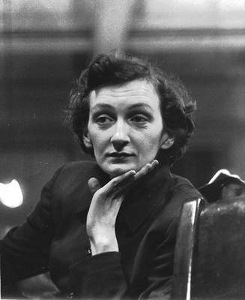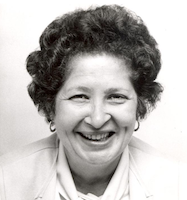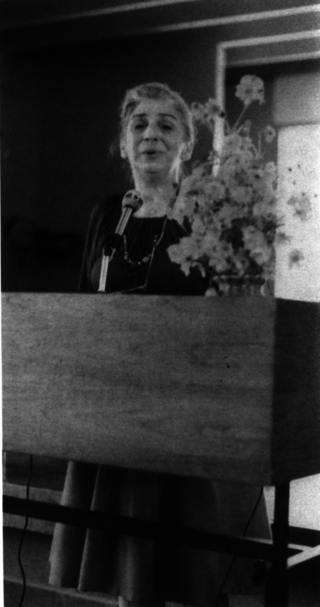Related Research Articles

Bayard Rustin was an African American leader in social movements for civil rights, socialism, nonviolence, and gay rights.

James Morris Lawson Jr. is an American activist and university professor. He was a leading theoretician and tactician of nonviolence within the Civil Rights Movement. During the 1960s, he served as a mentor to the Nashville Student Movement and the Student Nonviolent Coordinating Committee. He was expelled from Vanderbilt University for his civil rights activism in 1960, and later served as a pastor in Los Angeles for 25 years.

Communist Party USA, officially the Communist Party of the United States of America (CPUSA), also known as the American Communist Party, is a Marxist–Leninist communist party in the United States which was established in 1919 after a split in the Socialist Party of America following the Russian Revolution.
The Oxnard strike of 1903 was a labor rights dispute in the southern California coastal city of Oxnard between local landowners and the majority Japanese and Mexican labor force.
Labor rights or workers' rights are both legal rights and human rights relating to labor relations between workers and employers. These rights are codified in national and international labor and employment law. In general, these rights influence working conditions in the relations of employment. One of the most prominent is the right to freedom of association, otherwise known as the right to organize. Workers organized in trade unions exercise the right to collective bargaining to improve working conditions.

Peter Joseph Brennan was an American labor activist and politician who served as United States Secretary of Labor from February 2, 1973 until March 15, 1975 in the administrations of Presidents Nixon and Ford. Brennan had previously been the president of both the Building and Construction Trades Council of Greater New York and the Building and Construction Trades Council of New York, and he returned to the former position after leaving the Ford administration. He was a strong opponent of affirmative action measures to increase the number of minority construction workers. After organizing a demonstration in support of the Nixon administration that turned into the Hard Hat Riot of May 8, 1970, where construction workers violently attacked student anti-war protesters, Brennan was wooed by the Nixon administration as a potential supporter in the 1972 presidential election. His work for Nixon in that election was crucial in increasing the vote for Nixon in New York and in the union movement.

Louise Alone Thompson Patterson was a prominent American social activist and college professor. Patterson's early experiences of isolation and persecution on the West Coast had a profound impact on her later activism. She recognized the ways in which racism and discrimination affected individuals and communities and dedicated her life to challenging these systems of oppression. Her involvement in the Harlem Renaissance, a period of intellectual and cultural awakening in African American communities, allowed her to connect with other artists and activists who were similarly committed to social justice. In addition to her notable contributions to civil rights activism, Thompson Patterson was also recognized as one of the pioneering Black women to be admitted to the University of California at Berkeley.

Herbert Hill was the labor director of the National Association for the Advancement of Colored People for decades and was a frequent contributor to New Politics as well as the author of several books. He was later Evjue-Bascom Professor of Afro-American Studies and Industrial Relations at the University of Wisconsin–Madison and eventually emeritus professor. He played a significant role in the civil rights movement in pressuring labor unions to desegregate and to seriously implement measures that would integrate African Americans in the labor market. He was also famous for his belief that American trade unions had downplayed the history of racism that tarred their reputations, before and after the Jim Crow era.
The Jewish Labor Committee (JLC) is an American secular Jewish labor organization dedicated to promoting labor union interests in Jewish communities, and Jewish interests within unions. The organization is headquartered in New York City, with local/regional offices in Boston, New York City, Philadelphia, Chicago and Los Angeles, and volunteer-led affiliated groups in other U.S. communities. It was founded in 1934 in response to the rise of Nazism in Europe. Today, it works to maintain and strengthen the historically strong relationship between the American Jewish community and the trade union movement, and to promote what they see as the shared social justice agenda of both communities. The JLC was also active in Canada from 1936 until the 1970s.

Anne McCarty Braden was an American civil rights activist, journalist, and educator dedicated to the cause of racial equality. She and her husband bought a suburban house for an African American couple during Jim Crow. White neighbors burned crosses and bombed the house. During McCarthyism, Anne was charged with sedition. She wrote and organized for the southern civil rights movement before violations became national news. Anne was among nation's most outspoken white anti-racist activists, organizing across racial divides in environmental, women's, and anti-nuclear movements.

Harry Haywood was an American political activist who was a leading figure in both the Communist Party of the United States (CPUSA) and the Communist Party of the Soviet Union (CPSU). His goal was to connect the political philosophy of the Communist Party with the issues of race.
Luisa Moreno was a leader in the United States labor movement and a social activist. She unionized workers, led strikes, wrote pamphlets in English and Spanish, and convened the 1939 Congreso de Pueblos de Habla Española, the "first national Latino civil rights assembly", before returning to Guatemala in 1950.
The National Negro Congress (NNC) was an American organization formed in 1936 at Howard University as a broadly based organization with the goal of fighting for Black liberation; it was the successor to the League of Struggle for Negro Rights, both affiliated with the Communist Party. During the Great Depression, the party worked in the United States to unite black and white workers and intellectuals in the fight for racial justice. This period represented the Party's peak of prestige in African-American communities. NNC was opposed to war, fascism, and discrimination, especially racial discrimination. During the Great Depression era, a majority of Americans faced immense economic problems. Many lost their jobs and as a result, were forced to live at the margins of society. The crisis highlighted inequities for many African Americans, who were unemployed at higher rates than white.
Kalmen Kaplansky, was a civil, human rights and trade union activist in Canada. Alan Borovoy described Kaplansky as "the zaideh" (grandfather) of the Canadian human rights movement.

Lucy Randolph Mason was a 20th-century American labor activist and suffragist. She was involved in the union movement, the consumer movement and the civil rights movement in the mid-20th century.
The United Public Workers of America (1946–1952) was an American labor union representing federal, state, county, and local government employees. The union challenged the constitutionality of the Hatch Act of 1939, which prohibited federal executive branch employees from engaging in politics. In United Public Workers of America v. Mitchell, 330 U.S. 75 (1947), the Supreme Court of the United States upheld the Hatch Act, finding that its infringement on the Constitutional rights was outweighed by the need to end political corruption. The union's leadership was Communist, and in a famous purge the union was ejected from its parent trade union federation, the Congress of Industrial Organizations, in 1950.

Lillian López (1925–2005) was a Puerto Rican activist and librarian. She worked for the New York Public Library from 1960 until 1985, spearheading the South Bronx Project, an effort to revitalize communities in the Bronx through library workshops and outreach, and also advocating for library services for under served communities, especially speakers of languages other than English.

Annie Stein was a civil rights activist who focused on desegregating Washington, D.C. theaters, restaurants and department stores.

Asian American activism broadly refers to the political movements and social justice activities involving Asian Americans. Since the first wave of Asian immigration to the United States, Asians have been actively engaged in social and political organizing. The early Asian American activism was mainly organized in response to the anti-Asian racism and Asian exclusion laws in the late-nineteenth century, but during this period, there was no sense of collective Asian American identity. Different ethnic groups organized in their own ways to address the discrimination and exclusion laws separately. It was not until the 1960s when the collective identity was developed from the civil rights movements and different Asian ethnic groups started to come together to fight against anti-Asian racism as a whole.
The following is a timeline of Latino civil rights in the United States.
References
- 1 2 Roberts, Sam (6 May 2016). "James Haughton, Who Fought Racial Barriers in Building Trades, Dies at 86". The New York Times. Retrieved 2018-11-24.
- 1 2 "archives.nypl.org -- James Haughton Papers". archives.nypl.org. Retrieved 2018-11-24.
- ↑ Notable American women : a biographical dictionary completing the twentieth century. Ware, Susan, 1950-, Braukman, Stacy Lorraine., Radcliffe Institute for Advanced Study. Cambridge, Mass: Belknap Press. 2004. p. 374. ISBN 067401488X. OCLC 56014756.
{{cite book}}: CS1 maint: others (link) - ↑ Jackson, Janine (1999). "James Haughton on Racism in the House of Labor". George Mason University.
- ↑ "James Haughton, crusader against the construction industry" . Retrieved 2018-11-24.
- ↑ "James Haughton papers, 1924-1984 (bulk 1959-1982)" . Retrieved 2018-11-24.